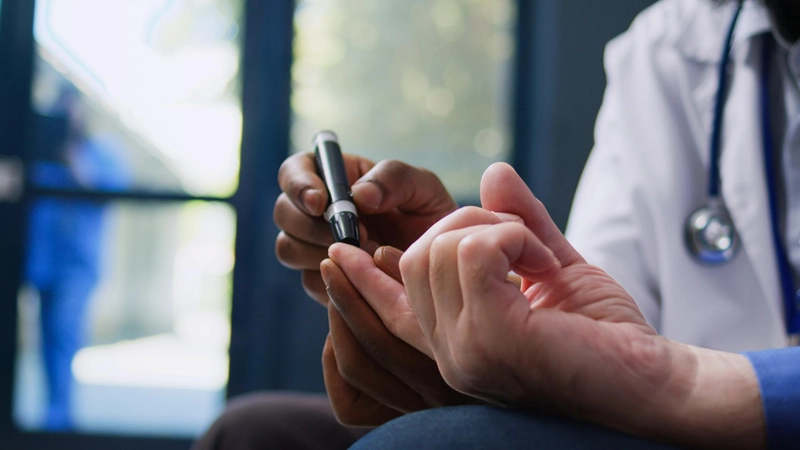- Published on: Jun 08, 2023
- 2 minute read
- By: Secondmedic Expert
Understanding Heat Stroke: Symptoms, Causes, And Effective Treatment
Are you aware of the risks associated with heat stroke and how to prevent it? Understanding the signs, causes, and available treatments for heat stroke can help prevent or treat it in a timely manner, even though it can have serious side effects. Have you ever had heat stroke symptoms or seen someone else have them?
You can recognise a heat stroke emergency and take necessary action by being aware of the warning indicators, which include high body temperature, rapid heartbeat, and confusion. Have you taken any measures to guard against heat stroke, particularly in hot climates or while engaging in heavy physical activity?
Being prepared and having first aid skills, such as how to move a person to a cooler area and hydrate them, can save lives. Let's examine heat stroke in more detail so that we may arm ourselves with the knowledge we need to stay safe and assist those who are in need.
Introduction: When the body's mechanism for controlling temperature is overwhelmed by high heat, a hazardous disease called heat stroke that could be fatal develops. To avoid serious complications, it is crucial to be aware of the signs and symptoms of heat stroke, comprehend its origins, and know how to treat it with the right first aid measures. The numerous features of heat stroke, including its signs, causes, and available treatments, will be covered in this blog post.
1. Understanding the Signs of Heat Stroke: Heat stroke symptoms are a sign of an emergency that needs quick attention. You can help recognise heat stroke and give prompt aid by being aware of these symptoms.The following list of symptoms will be covered in this section:
- High body temperature
- Rapid heartbeat and breathing
- Headache, dizziness, and confusion
- Nausea and vomiting
- Hot and dry skin
- Muscle cramps or weakness
It is essential to pay attention to these symptoms, especially in hot environments or during strenuous physical activity.
2. Understanding the Causes of Heat Stroke: There are many different reasons why people have heat stroke, and knowing the causes can help prevent it. The main contributors to heat stroke will be covered in this section, including:
- Exposure to high temperatures and humidity
- Strenuous physical activity in hot environments
- Inadequate hydration
- Wearing excessive clothing or protective gear in hot conditions
- Certain medical conditions or medications that affect heat regulation
By being mindful of these causes, individuals can take necessary precautions to reduce the risk of heat stroke.
3. Effective Treatment for Heat Stroke: Individuals suffering from heat stroke must receive prompt and effective care. This section will give you important tips on how to treat someone who has heat stroke properly, such as:
- Seeking immediate medical help
- Moving the affected person to a cooler area
- Cooling the body using methods such as cold compresses and water immersion
- Hydrating the individual with water or electrolyte-rich fluids
- Administering first aid techniques to lower body temperature
4. Heatstroke First Aid Techniques: Knowing the right first aid procedures can make a big difference in the outcome of a heat stroke emergency. This section will go through crucial first aid actions that can be conducted up to the arrival of expert medical assistance, like:
- Removing excess clothing
- Applying cool water or ice packs to the body
- Ensuring proper ventilation and air circulation
- Monitoring vital signs
- Providing reassurance and comfort to the affected person
In conclusion, heat stroke is a serious ailment that needs to be treated very away. People can minimize their risks of developing heat stroke by taking the required precautions by being aware of its signs, causes, and efficient treatments. Keep an eye out for the symptoms of heat stroke, especially in hot locations or while engaging in strenuous physical activity. Also, stay hydrated. You may safeguard yourself and people around you against the risks of heat stroke by being knowledgeable and ready.
Read FAQs
A. Heatstroke is a severe heat-related illness characterized by a dangerously high body temperature (typically above 104°F or 40°C). It is a medical emergency that requires immediate treatment.
A. Heatstroke can be caused by prolonged exposure to high temperatures, particularly in hot and humid environments. It can occur due to overexertion in hot weather, lack of adequate fluid intake, or being in a poorly ventilated area with high temperatures.
A. The symptoms of heatstroke may include a high body temperature, altered mental state or behavior (such as confusion, agitation, or hallucinations), nausea or vomiting, headache, rapid heartbeat, flushed skin, rapid breathing, and even loss of consciousness or seizures.
A. If the person is conscious and able to swallow, you can encourage them to drink cool fluids (preferably water or sports drinks). However, it is crucial to seek immediate medical help and not force fluids if the person is unconscious or experiencing altered mental status.
A. While it may seem logical to use ice to cool the person rapidly, it is generally not recommended. Applying ice directly to the skin can cause blood vessels to constrict, which hampers heat dissipation. It is more effective to use cool water or wet towels to facilitate gradual cooling.
A. Certain groups are more susceptible to heatstroke, including older adults, young children, individuals with chronic illnesses, athletes, and outdoor workers. People on certain medications or with a history of heat-related illnesses are also at increased risk.










